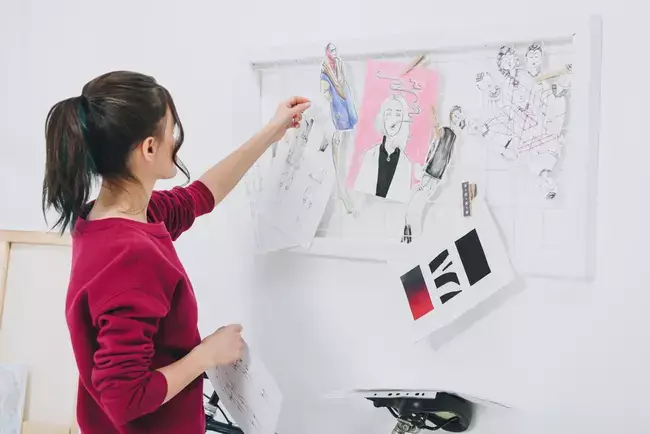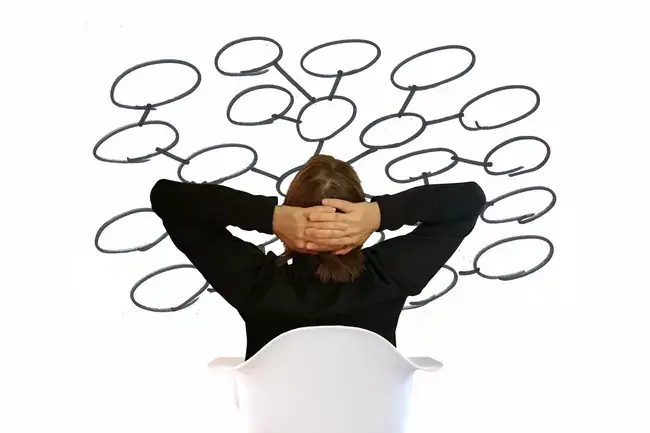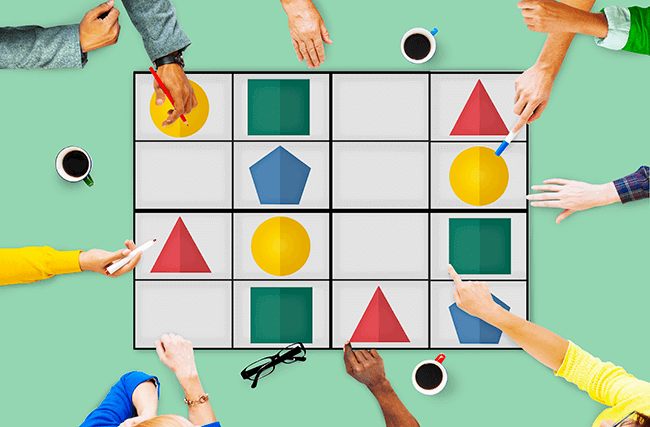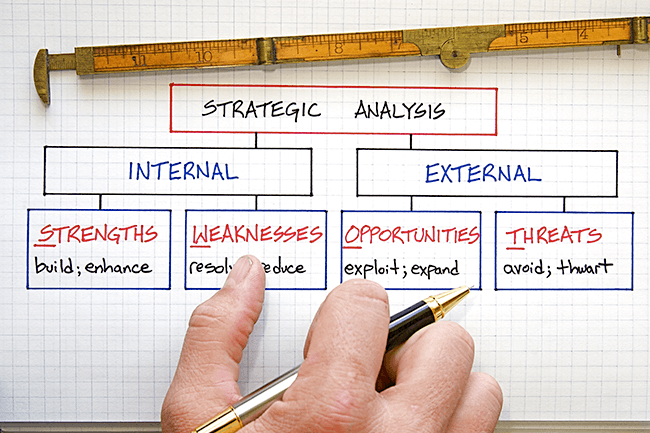7 Benefits of Mood Boards

What’s your vision?
All too often, businesses and their clients have different answers to this question, leading to miscommunications, months spent on re-working projects, and in worst cases, project failure.
Though lack of vision is a common problem, it doesn’t have to be. Establishing clear visual goals for creative projects during the initial stages will reduce problems down the road.
Keep reading to learn more about the seven benefits of implementing mood boards into your workplace’s brainstorming process.
What Is a Mood Board?
A mood board is a visual presentation that combines design elements into one arrangement. It’s a way to communicate the vision and themes of a project, especially ones that rely on creativity.
Professional mood boards can be either physical or digital. Digital mood boards are beneficial to UX designers or clients who want 24/7 access. Physical mood boards are great for getting a tangible understanding of what the elements of a project will look like in real-time.
What To Include in a Mood Board?
The magic of creating mood boards is that there is no set formula for what should be included. While they typically include visual elements like a color palette, typeface, and logo, what you include depends entirely on your project.
For instance, a project centered around interior design would include color scheme, texture samples, images of room inspiration, and must-have furniture pieces.
You could also use mood boards as a style guide for digital campaigns, including the inspiration for infographics and typography.
1. Saves Time
Some of your clients may not want to pay for mood boards and would rather jump right to the action. But a few hours during the initial phase of a project could save weeks or months during later stages.
Mood boards create a vision of where you’re headed, providing a foundation for the actions your project needs and how you should schedule them. It’s much less likely that you’ll have to re-do a project that was outlined by a mood board.
2. Cultivates Inspiration
Everyone occasionally experiences roadblocks during the creative process. The process of beginning a mood board can trigger a creative, calm state. Known as the flow state, this is the part of your brain where you get “in the zone” and come up with your best ideas.
And even if you’re not in the process of actively working on your mood board, they’re a great “catch-all” for all of the creative sparks you experience throughout the day.
3. Refines Your Vision
In some cases, your clients will have neither a style guide nor specific requirements and trust you enough to give you complete freedom over the project.
While being in control of the entire design process is an amazing feeling, it’s natural to feel intimated by the blank-canvas syndrome. Maybe you do have a few ideas, but you’re not clear about what to do next.
Mood boards make it less daunting to start a project because they are designed to refine your vision.
You’ll start by adding a few key ideas, then move around elements as inspiration strikes or you realize that certain parts don’t fit anymore. You’ll be left with a composition of the clarified themes of your project.
4. Allows for Modifications
It’s normal for successful projects to be modified and re-worked a few times throughout the process. The key is doing it without disrupting the flow of the timeline.
Mood boards create a smoother project process because they allow for modifications both during the earliest stage of the project and a bit later when final decisions are being made.
5. Fosters Stronger Client Relationships
Often, you’ll work with clients who already have an established design vision. In these situations, having a mood board is to your advantage. By learning exactly what your client wants and curating a visual representation of their expectations, you’ll create a strong foundation for your relationship.
Creating a mood board early in the design process will provide a tool that keeps everyone on the same page. You’ll no longer have to interpret your clients’ demands, only to find out that they meant something entirely different.
Instead, you’ll have a clear communication tool that can be altered throughout the brainstorming phase until everyone is happy. When clients feel involved, they’re more inclined to trust you. This makes it much easier for you when a difficult decision needs to be made later.
6. Can Be Used for Reference
A mood board should be unique to every project, but this doesn’t mean that you have to start from scratch every single time. Once you have a portfolio of mood boards, you can present them to your clients as inspiration or potential layouts.
You can also refer back to previous mood boards if you’re feeling stuck on a project. You may have a project that requires a similar color scheme as another one, and an old mood board may be just what you need to get ideas flowing.
7. Keeps Project Goals on Track
Distractions are common when working on creative projects. Sometimes, you or a client may get inspired by a new idea or theme and want to change your design scheme completely.
While changing your mood board is both expected and encouraged during the brainstorming process, it’s important to settle on a final design scheme to keep your project on schedule and to reach your outlined goals.
Mood boards will keep your project on track later in the process when you may feel discouraged or bored. They’ll serve as the visual reminder of why you started and the value of following through.
Designing the Perfect Mood Boards
Workplace brainstorming is the key to happy clients and effective project results. And you don’t have to get started alone.
With the expertise of the Huddle IQ team, you can transform the initial stages of your team’s creative process – whether it’s designing mood boards or developing a unique strategy – for amazing results down the line. Contact our team to get started!














